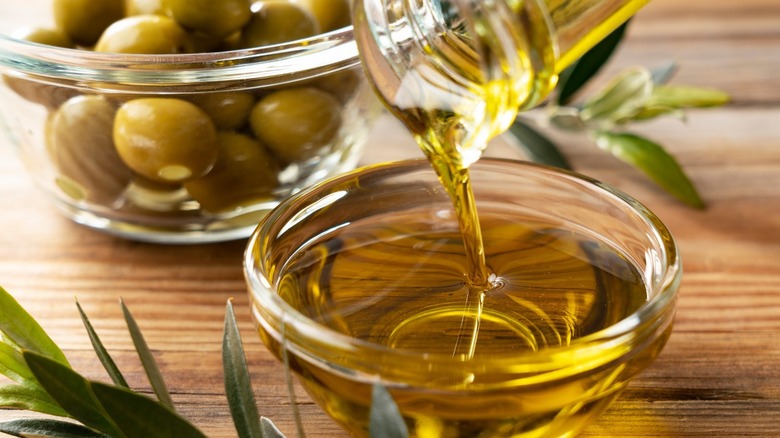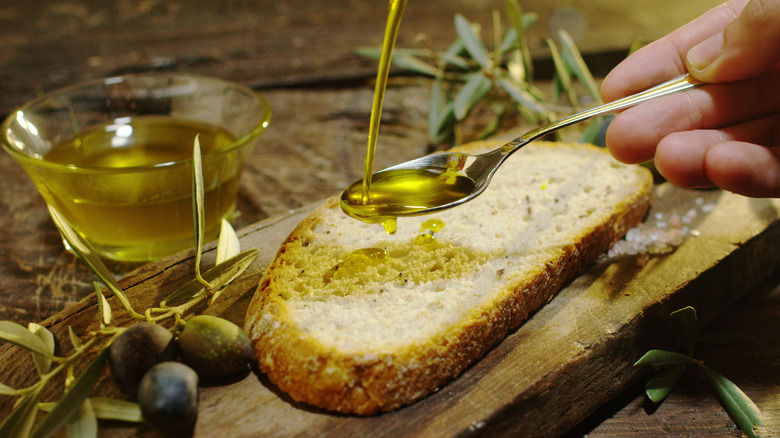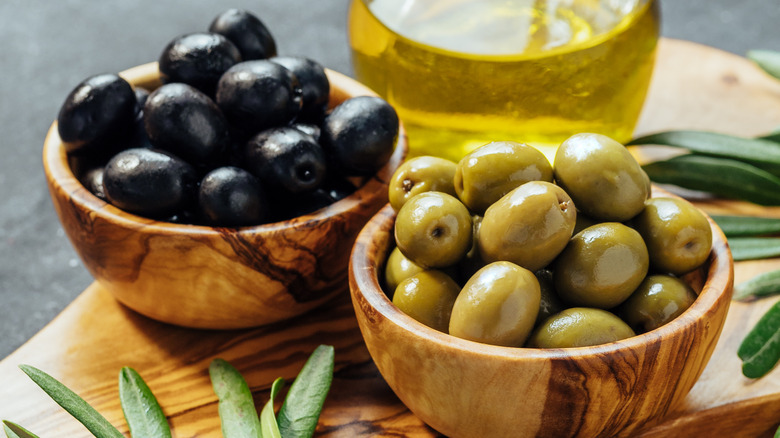What It Really Means If Your Olive Oil Tastes Bitter
Olive oil is a pantry staple that's in most people's kitchens, but with so many choices in brand and type, it can be daunting to know how to pick a high-quality oil or even how to tell if your oil is good once you've had it for a while. For some home cooks, bitterness in olive oil might raise suspicion. When served in small doses and balanced by other flavors, slightly bitter notes can be welcome in many dishes. But when an ingredient tastes extremely bitter, it could be unappetizing or construed as a hint that the item has gone bad. With olive oil, however, it's actually the opposite.
In olive oil, you actually want that bitter flavor, as the bitterness often means that it's even richer in health benefits, explains Well+Good. While some people may like this zingy, intense quality in their oil, others might find it overpowering. In this case, there are many ways to tame the bitterness and highlight the other flavors in the oil while still reaping its wonders.
Polyphenols cause bitterness
The agents responsible for the bitter flavor in olives — and thus, olive oil — are polyphenols. According to Healthline, polyphenols have antioxidant qualities that may aid in issues with blood sugar and heart disease. The strong polyphenols in olive oil are the secret behind its reputation as a heart-healthy oil, according to a 2006 study published in the Annals of Internal Medicine.
The more bitter and peppery a bottle of olive oil tastes, the more polyphenols it contains, as Alexandra Devarenne, co-founder of The Extra Virgin Alliance, told Well+Good. "Look for oils that are distinctly bitter, and pungent in flavor. And those are the ones that are going to have higher phenol content," she said. If you don't like a side of pungency with your olive oil, don't worry. Devarenne went on to explain that gentler-tasting oil doesn't necessarily indicate a lower quality and that it is still healthy.
What causes certain types of olive oil to have more polyphenols?
The higher presence of polyphenols in olive oil all comes down to the olives and how they're processed. Higher-end olive oils are cold-pressed, a process that involves crushing the olives to extract the oil without exceeding the European food standard temperature of 81 degrees Fahrenheit, Healthline reports. Higher temperatures can destroy the nutrients and delicate flavors inherent in the olive, so cold-pressing essentially preserves the polyphenols in the olive oil, as Allrecipes explains.
Harvesting the olive crop early can also play a major part in the end flavor of the oil. According to Treurer, early harvesting in October can yield a more "intense" taste and a higher concentration of flavor. If you do splurge on a quality, healthy, high phenolic olive oil, be sure to use it within nine to 18 months or by the best-by date listed on the bottle, as there are more polyphenols in fresh oil.


